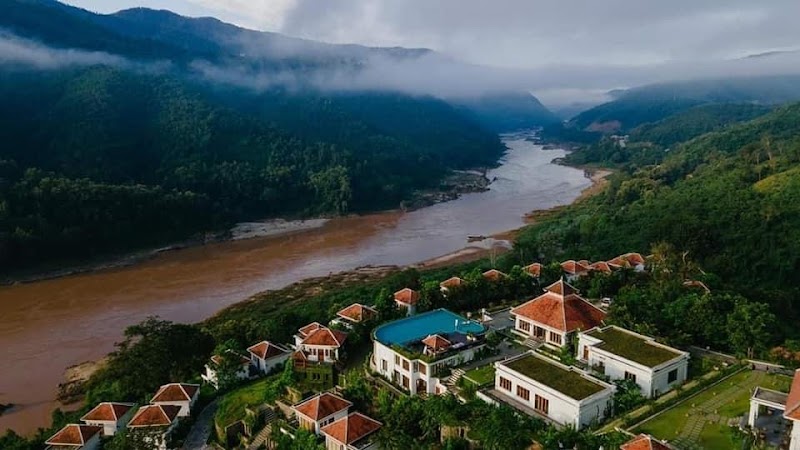
Experience The Hill Tribe Cultural Fair In Thoeng, Chiang Rai Province
Explore the lively Hill Tribe Cultural Fair in Thoeng, where traditional crafts, music, and mountain village life draw visitors into northern Thailand’s rich indigenous heritage. Discover practical tips for enjoying the fair and surrounding trails with ease, whether you're a casual explorer or seasoned adventurer.
Wear Reliable Hiking Shoes
Choose sturdy, breathable shoes to handle dirt and forest paths comfortably while keeping your feet cool.
Carry Cash for Purchases
Many vendors accept only cash, so bring enough baht to support artisans and buy authentic crafts.
Stay Hydrated in Cool Weather
Even if the air feels fresh, walking and cultural activities can dehydrate you; carry at least 1 liter of water.
Bring a Lightweight Rain Jacket
Unexpected afternoon showers can catch you off guard, especially between November and January.
Experience The Hill Tribe Cultural Fair In Thoeng, Chiang Rai Province
The Hill Tribe Cultural Fair in Thoeng, Chiang Rai Province offers an immersive glimpse into the traditions and lifestyles of Thailand's ethnic minorities. Held annually, this dynamic event transforms the town into a vibrant stage where handicrafts, traditional dances, and authentic hill tribe cuisine come alive. Visitors can walk through open-air markets buzzing with the vibrant quills of Hmong embroidery and the steady rhythms of Lisu drums, feeling the pulse of time-honored customs.
Beyond the fair itself, the surrounding landscapes shape the experience. Thoeng’s rolling hills rise gently around you, forested paths weaving through villages where residents openly welcome curiosity with warmth and generosity. The terrain is approachable—mostly moderate with some mild elevation—making it accessible to casual walkers and seasoned travelers alike. Expect to cover roughly 5-7 kilometers if you venture between villages and festival sites, with elevation gains around 200 meters. Trails follow dirt roads and forest tracks, lined with teak and bamboo, where the wind rustles the leaves like a whispered invitation.
Timing your visit is essential. The fair usually unfolds during the cool season, between November and January, offering crisp air that sharpens senses without adding strain. Mornings crackle with activity as artisans set up booths, and afternoons pulse with dance performances and storytelling. Pace yourself to stay hydrated and take breaks under shaded spots where the forest seems to observe quietly.
Footwear matters: sturdy, breathable hiking shoes will keep you comfortable on uneven ground without overheating. Bring a lightweight rain jacket—weather can be unpredictable, and brief showers dare you to stay dry. Sun protection is smart; open village areas leave you exposed when the sun edges toward noon. Finally, carry cash. Many vendors prefer it, allowing you to support the community directly and collect handwoven fabrics, silver jewelry, or woven baskets that hold stories within their fibers.
The fair is more than a showcase—it’s an invitation to learn, respect, and connect with cultures fiercely maintaining their identity. As you move from tent to trail, each moment offers chances to see the landscape and its people as they truly are: enduring, vibrant, and deeply rooted in their environment. For travelers ready for cultural immersion paired with light outdoor adventure, Thoeng’s Hill Tribe Cultural Fair delivers a chance to engage practically and thoughtfully with northern Thailand’s living heritage.
Nearby Trips
All Adventures
Boat Charters
Water Activities
Adventures near Thoeng, Chiang Rai Province
Discover the unique and memorable adventures that make Thoeng, Chiang Rai Province special.
Frequently Asked Questions
What is the best time of day to visit the Hill Tribe Cultural Fair?
Mornings are ideal for exploring artisan booths when the crowds are smaller and the air feels fresh. Afternoon schedules focus on dance performances and storytelling, though note that sun exposure increases.
Are the trails around Thoeng suitable for beginners?
Yes, the walks linking festival sites and villages total about 5-7 kilometers with moderate terrain and mild elevation, accessible for casual walkers with basic fitness.
Can I purchase authentic local crafts at the fair?
Absolutely. Local artisans sell handwoven textiles, silver jewelry, and traditional baskets, mostly for cash. Buying here supports the communities directly.
Is there wildlife to observe during the hike?
The forested paths host localized bird species like bulbuls and barbets; small mammals and butterflies also frequent the area. Keep a respectful distance and stay quiet to catch glimpses.
How culturally sensitive should visitors be during the fair?
Respect is crucial. Ask permission before photographing people or homes, avoid disrupting ceremonies, and listen attentively to stories shared by locals.
What environmental considerations should visitors keep in mind?
Stick to marked trails to protect understory plants, carry out all trash, and choose eco-friendly products to minimize impact on these delicate mountain communities.
Recommended Gear
Sturdy Hiking Shoes
Provide support and comfort on dirt and forest paths throughout the year.
Lightweight Rain Jacket
Protects you from sudden showers common during the cool season festival period.
Reusable Water Bottle
Ensures hydration during walks and fair activities, reduce plastic waste.
Sunhat and Sunscreen
Protects skin and eyes during midday hours when open village spaces offer little shade.
Local Insights
Hidden Gems
- "The small viewpoint near Ban Pa Pong village offers panoramic valley views rarely crowded with tourists."
- "A serene stream running alongside part of the fair route dares you to pause and listen to water’s persistent song."
Wildlife
- "Watch for vivid blue-winged pittas and colorful sunbirds flitting at forest edges."
- "Occasional macaques inhabit higher elevations; observe quietly without feeding them."
History
"This cultural fair preserves and celebrates the heritage of Hmong, Lisu, Akha, and other hill tribes who have lived in northern Thailand’s hills for centuries, maintaining customs despite modernization pressures."
